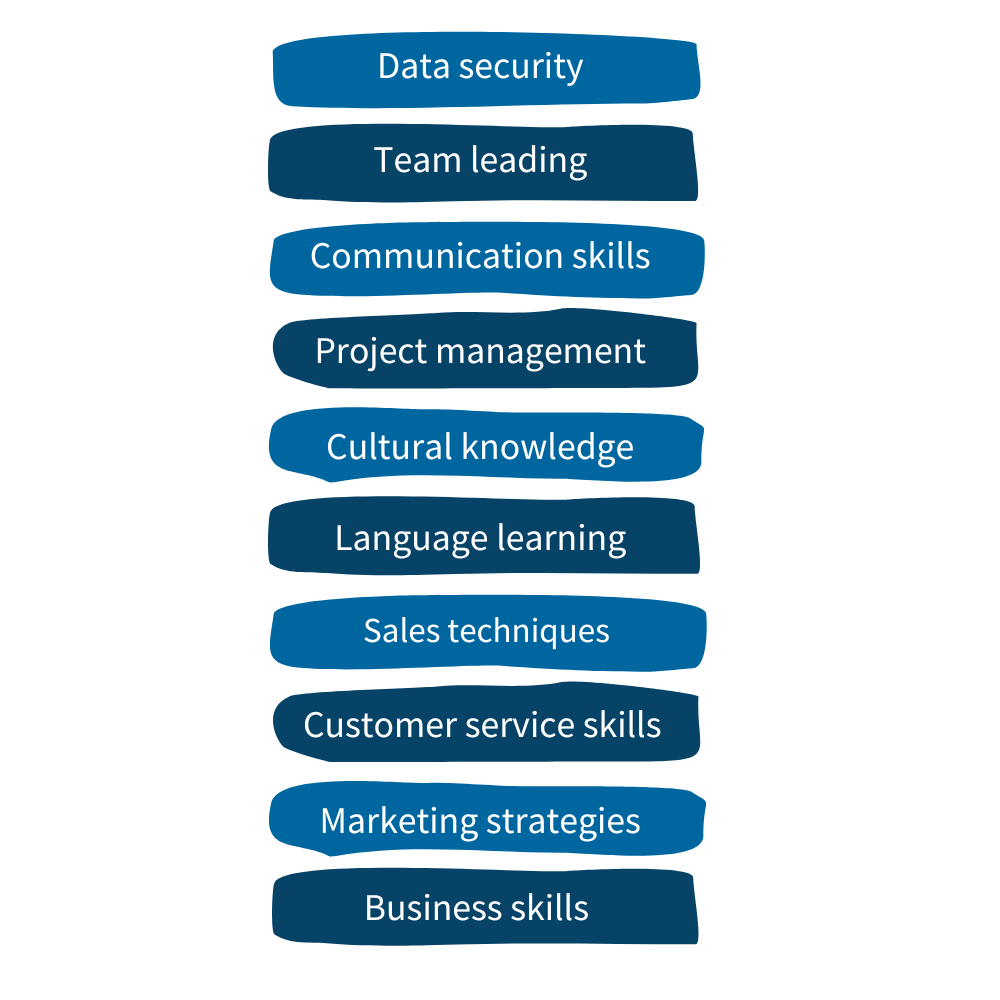
Online training is an increasingly popular method for training employees, offering numerous benefits in terms of performance and productivity. This blog post explores what is online training and how it can positively impact workplace productivity.
What is online training?
Online training refers to training delivered through digital tools, enabling learning over the internet and without physical presence.
It offers flexible and cost-effective learning opportunities, independent of location. Online training enables continuous learning and tailoring learning according to the employees' needs.
Common forms of online training include for example:
- e-learning courses
- self-study materials
- webinars and live online lectures
- virtual workshops
Online training can be combined with other training methods, such as in-person instruction (blended learning).
Impacts of online training
Online training helps employees to acquire new skills and knowledge. With online training, the training content can easily be revisited and the employees can review the material whenever necessary. Revising the material strengthens understanding and retention, which enables employees to apply what they have learned more effectively, improving job performance. Online training can also be tailored according to the employees' needs, which increases the commitment to learning and ensures that each employee gets the best necessary benefit from training.
Improved knowledge and skills can boost confidence at work, reducing errors and leading to a better work quality. Additionally, better job mastery often leads to increased motivation.
Online training saves time and resources
Since online training can be conducted anywhere, it reduces for example travel expenses. Time and cost savings give employees more time to focus on their core tasks, increasing productivity. In addition, online training content can be reused, which makes it cots-effective in the long term.
Time is saved also for example when new employees can independently study onboarding material on a learning platform, without the need for the supervisor to go through every detail with each new hire.
Tracking competence development
Online learning platforms offer great tools for tracking learning progress and competence development, such as learning analytics and competency matrix. Organizations can utilize this data to develop their training programs and identify possible skill gaps.
Enhancing collaboration and teamwork skills
Online training can also improve the employees' teamwork and collaboration skills. Even though online training is usually seen as individual study, many online training platforms include group tasks where the team members can collaborate in a virtual environment. Chat functions and group discussions in online trainings provide tools for collaboration and improving the team's communication skills.
Online training offers teams a possibility for ongoing development and common learning goals. Teams that train and grow together can adapt more efficiently to new challenges, enhancing the team's productivity and flexibility.

Online training can be used to develop different skills.
Measuring the impact of online training
Measuring the impact of online training is important in order to ensure its efficiency and benefits for the employees and the organization.
Use pre- and post-training assessments and compare the results of these tests to measure the skill and knowledge acquisition. Ask the employees to assess their own skills before and after the training. The self-assessments help you to see whether the employees feel that they have progressed. In addition, gather feedback from the employees about the training - was it interesting, useful, and relevant for them.
Monitor whether the employees' performance has improved due to online training, such as through reduced errors, faster task completion, or improved quality. Feedback from supervisors or team leaders is often valuable, as they observe the employees’ day-to-day performance and can assess the training benefits.
Follow how actively the employees participate in online trainings. Metrics like course completion rates, drop-off rates, and time spent on training can provide valuable insights. Online training platforms offer excellent tools for tracking this kind of analytics.
Building organizational expertise efficiently through online training
Online training is an effective way to deliver organizational training programs. It can be implemented quickly, ensures consistent training and onboarding, saves time and resources, and offers flexibility for participants.
With online training, employees learn new skills and can for example quickly and efficiently adopt new tools and practices. Training the employees can enhance their performance and the quality of their work, contributing to greater organizational productivity.